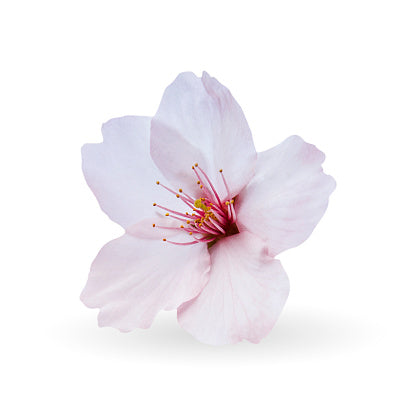EkoWorld
Shell Necklace in 925 Silver and Natural Pearl
Shell Necklace in 925 Silver and Natural Pearl
Couldn't load pickup availability
Free shipping
Free shipping
Returns and exchanges within 30 days
Returns and exchanges within 30 days
Returns and exchanges up to 30 days after receiving your order!
The return can be requested within 14 days of receiving the order, and made within 30 days after receiving the order.
10% discount if you add it in the 🛒
10% discount if you add it in the 🛒
Unlock an additional discount when you buy multiple items!
The more you buy, the more you save! ❤️
The more you buy, the more you save! ❤️
The more you buy, the more you save!
Buy 2 Items with 15% discount
Buy 3 Items with 20% discount
Buy 4 Items for 25% off
- Description
- Specifiche
Shells are objects loved by almost everyone, scattered on the beaches, like sea jewels that children and adults have always collected. Few people know, however, that for most of history, shells played a fundamental role for man, they were used in all fields, from money to art. Primitive men of the Stone Age used shells to decorate their jewelry, houses and boats. In many tropical countries, tribes used shells as a bargaining chip. The Incas buried shells with their dead. Throughout history, architects and artists incorporated various symbolisms into their works, including the shell. Among the ruins in Pompeii, shells were found used to decorate the statues of the deities.
The result of these ancient customs was that the shells were absorbed into our collective unconscious as a positive symbol.
In Greek and Roman myths, shells were a symbol of prosperity, of rebirth and, if associated with the sea, they indicated the source of fertility. We all come from the sea, the shell thus became a symbol of the womb and the birth of the goddess Venus or Aphrodite.
For this reason, the shell represented the female divinity in pagan worship, and was associated with love, birth, reproduction.
In Roman mythology it is said that Venus, the goddess of love and fertility, was created from the foam washed ashore on top of a shell. Many paintings representing Venus therefore depict a shell to identify it. A classic example is Botticelli's "The Birth of Venus".

The shell is linked to the famous Way of St. James (also known as "The Way of Santiago"), one of the most important Christian pilgrimages in medieval times, together with Rome and Jerusalem.
“The conch is the traditional symbol of James, son of Zebedee, and is popular with pilgrims on the Way of St. James to the apostle's shrine in Santiago de Compostela in Spain. Medieval Christians who embarked on the pilgrimage to his shrine often wore the shell symbol in their hats or clothing.
Few people know that the Way of St. James was built on the ruins of a much older sacred path. The pilgrimage was used to promote fertility and was traveled by young couples who wished to have a child. True to its ancient meaning, it is said that pilgrims carried a shell with them. Christians continued this tradition in part, but dedicated the route to St. James.
The pagan symbol of the shell is therefore embedded in the collective unconscious. It has always had positive connotations, just like the next symbol we are going to analyze, the diamond / rhombus.
30 DAY MONEY BACK GUARANTEE
are you not satisfied with your purchase? You will have the option to return it and receive a full refund within 30 days of payment.
- √ COLLANA IN ARGENTO 925 STERLING AAA ALTA QUALITÀ: Le nostre collane sono realizzate in argento 925 sterling massiccio, noto per la sua resistenza, luminosità e lucentezza. L'argento Sterling delle nostre collane resiste all'ossidazione.
- Il rivestimento in rodio garantisce una lucentezza duratura e rende le collane di argento 925 resistenti all'ossidazione!
- Senza nickel, senza piombo, e senza cadmio per prevenire eventuali reazioni avverse.
- √ ADATTO AD OGNI OCCASIONE: Aggiungi stile al tuo look casual con questa collana in argento 925. Collana da indossare per chi ha una personalità unica ed emozionante. Perfetta da indossare tutti i giorni per un look che fa tendenza, a prescindere da quale sia dall'occasione. Un'aggiunta abbagliante per la tua collezione di gioielli!
- √ DESIGN MODERNO Le collane sono realizzati con un design che li rendono eleganti e trendy.
- √ UN REGALO MERAVIGLIOSO PER TUTTE LE OCCASIONI Regala a qualcuno di speciale un gioiello lussuoso e raffinato da sfoggiare con stile giorno e notte.
- √ ECCELLENTE SERVIZIO POST-VENDITA Tutti le nostre collane devono superare rigorosi test e controlli di qualità prima di essere messi in vendita. Se per qualsiasi motivo non sei completamente soddisfatto, contattaci entro 60 giorni e ti rimborseremo, senza chiedere ulteriori spiegazioni.
I gioielli EkoWorld sono progettati dai migliori designer di gioielli, sono semplici ma eleganti. Ci impegniamo a fornire gioielli unici e di alta qualità.
EkoWorld crea costantemente gioielli raffinati, concentrandosi sul perfezionare la qualità dei gioielli. Inoltre i nostri prodotti vengono sottoposti al test sanitario SGS, per la certificazione della qualità.
Materiale del prodotto:
argento Sterling 925.
Consigli per la manutenzione:
1. Evitare il contatto con sostanze acide, alcaline e corrosive.
2. Evitare l’urto con altri oggetti che potrebbero graffiarne la superficie.
3. Evitare il contatto con profumi, lozioni per il corpo, spray per capelli od ogni altro prodotto chimico che potrebbe danneggiare la lucentezza del metallo.
4. Evitare di indossare questo accessorio in caso di forte sudorazione, sotto la doccia, quando si dorme, ecc.
Nota bene:
1. Potrebbe esserci una differenza nelle misure del 2-3% a causa della misurazione manuale.
2. Le fotografie riproducono il prodotto reale; potrebbero esserci differenze di colore e aspetto a causa delle impostazioni dei diversi monitor sui quali le immagini vengono visualizzate.
Checkout safely using your preferred payment method
Recently Viewed
Discover all the jewels
-

Tree of Life
The Tree of Life commonly represents the interconnectedness of everything in the...
-

The magic of Flowers
Floriography is the 'language of flowers'. Dating back to the Victorian times...
-

World Fruit Jewels
Jewels in 925 Silver and Natural Stones inspired by the world of...
-

Animal Kingdom
The animal kingdom has been a rich source of inspiration for jewellery...

Turtle ring

Natural Stone Ring

Dragonfly earrings

Serpent Ring

Donut Charm
Popular caregories ...
View all-

Lotus flower
Lotus Flower Inspired Jewelery ...
-

Plum blossom
Jewelery inspired by the Plum Blossom
-

Sakura flowers
Sakura flower inspired jewelry ...
-

Guaranteed quality
Over 25,000 satisfied customers worldwide. -

Secure payment
We entrust the management of our online payments to Stripe and Paypal , 100% safe. -

Money Back Guarantee
Returns are possible up to 30 days from receipt of the items.

4,98 su 5 stelle
Basato su oltre 300 Recensioni.
Visualizzane una selezione o inviaci una tua foto per ottenere un Buono da 10 €





































